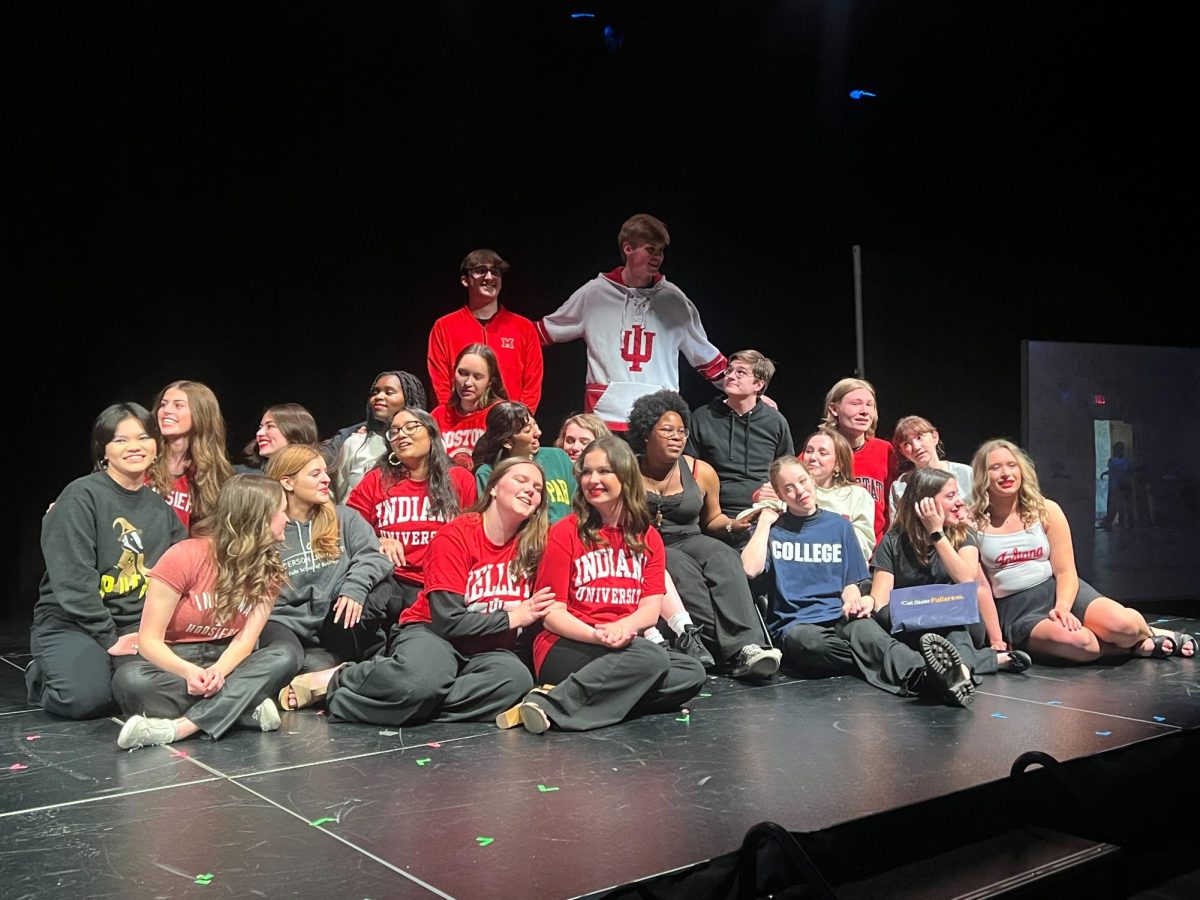Let’s do a word-association exercise. Bieber: hair; Deadmau5: giant electronic mouse head; Chuck Norris: beard; Nicki Minaj: weird hairstyles.
The state of our popular culture in modern times is becoming more and more iconic. In other words, the general audience focuses more on a certain trait or aspect of the artist rather than his/her music. This isn’t too surprising, our culture has been becoming progressively more visual over the last decade. But where is the tipping point? Where is the fine line between a good singer and a good model?
As with most problems in popular culture, I blame Britney Spears. Back then, in the 80s and early 90s, the relationship between the acoustic and visual aspects was in equilibrium. Yes, it was not all about the music; artists were more real. Now they look similar to Barbie dolls or something out of a fashion show. Britney Spears pushed that equilibrium over the edge. After her appearance on the stage, music changed. Now we have lip-syncing and these poor child singers like Justin Bieber, Aaron Carter and Miley Cyrus.
I feel bad for these kids. They are out on stage for the world to see during a vulnerable period of their lives. Musicians are prone to constant demands and expectations, and what most of these don’t account for is puberty. Being a popular singer during puberty is probably the worst thing ever. You are already insecure about yourself, and having all eyes on you makes the time no easier. This is why you rarely see an adult child star on television or in concert.
But child stars are not the threat; they are more like victims. The biggest threat I have seen is lip-syncing. It takes a large part of the talent demanded by singers out of the equation, meaning those who are good singers are left behind as model-like performers take the stage. However, this does not seem as big of a problem now as it was several years ago. After events like Ashlee Simpson, record companies have learned that the public generally dislikes lip-syncing.
The visualization of music is part of why the whole “hipster” movement started. Sure, hipsterism existed before this whole mess, but it was largely underground. It took off when the idea of “popular music isn’t cool” wormed its way into the audiences’ minds. They then turned to the World Wide Web and found all sorts of independent artists. I don’t think that these people are “indie.” The term hipster in modern times means someone is fed up with popular trends and has sought out the underground scenes.
While this definition may seem the same as indie, hipsterism has two key differences: the people and the time. Hipsterism started a few years ago, when people who listened and followed pop culture for years turned to the underground culture, bringing their ways and habits with them. Indie is much broader; it has no defined start and those who are indie never got into the mainstream culture. In other words, indie set up the music scene while hipsterism cultivated that into a social scene.
But hipsterism is not as definite as it may seem. It can bleed across both the mainstream and independent cultures. But there is a saying about these cultures, that they are “different in the same way.” This refers to the actual social dynamics of each community: we all want to outdo each other in whatever the task is.
So keeping that in mind, will this blossoming culture end up like the mainstream, visually driven and simulated? As of now it seems to be in an awkward place. The old members of the independent culture are rolling their eyes as hipsterism. If you looked at an online message board for an independent band or comic, you might be able to see the arguments between the indie kids and the hipsters. It is a battle between idea and status. Only time will tell which side will win.



















































![Review: “Suits” is a perfect blend of legal drama and humor [MUSE]](https://hilite.org/wp-content/uploads/2024/04/unnamed-1.png)
![Chelsea Meng on her Instagram-run bracelet shop [Biz Buzz]](https://hilite.org/wp-content/uploads/2024/04/IMG_2446-1200x838.jpg)
![Review: Quiet on Set: The Dark Side of Kids TV is the long awaited exposé of pedophilia within the children’s entertainment industry [MUSE]](https://hilite.org/wp-content/uploads/2024/04/unnamed.jpg)
![Review: “The Iron Claw” cannot get enough praise [MUSE]](https://hilite.org/wp-content/uploads/2024/04/unnamed.png)
![Review: “The Bear” sets an unbelievably high bar for future comedy shows [MUSE]](https://hilite.org/wp-content/uploads/2024/03/unnamed.png)
![Review in Print: Maripaz Villar brings a delightfully unique style to the world of WEBTOON [MUSE]](https://hilite.org/wp-content/uploads/2023/12/maripazcover-1200x960.jpg)
![Review: “The Sword of Kaigen” is a masterpiece [MUSE]](https://hilite.org/wp-content/uploads/2023/11/Screenshot-2023-11-26-201051.png)
![Review: Gateron Oil Kings, great linear switches, okay price [MUSE]](https://hilite.org/wp-content/uploads/2023/11/Screenshot-2023-11-26-200553.png)
![Review: “A Haunting in Venice” is a significant improvement from other Agatha Christie adaptations [MUSE]](https://hilite.org/wp-content/uploads/2023/11/e7ee2938a6d422669771bce6d8088521.jpg)
![Review: A Thanksgiving story from elementary school, still just as interesting [MUSE]](https://hilite.org/wp-content/uploads/2023/11/Screenshot-2023-11-26-195514-987x1200.png)
![Review: When I Fly Towards You, cute, uplifting youth drama [MUSE]](https://hilite.org/wp-content/uploads/2023/09/When-I-Fly-Towards-You-Chinese-drama.png)
![Postcards from Muse: Hawaii Travel Diary [MUSE]](https://hilite.org/wp-content/uploads/2023/09/My-project-1-1200x1200.jpg)
![Review: Ladybug & Cat Noir: The Movie, departure from original show [MUSE]](https://hilite.org/wp-content/uploads/2023/09/Ladybug__Cat_Noir_-_The_Movie_poster.jpg)
![Review in Print: Hidden Love is the cute, uplifting drama everyone needs [MUSE]](https://hilite.org/wp-content/uploads/2023/09/hiddenlovecover-e1693597208225-1030x1200.png)
![Review in Print: Heartstopper is the heartwarming queer romance we all need [MUSE]](https://hilite.org/wp-content/uploads/2023/08/museheartstoppercover-1200x654.png)























![Review: Ladybug & Cat Noir: The Movie, departure from original show [MUSE]](https://hilite.org/wp-content/uploads/2023/09/Ladybug__Cat_Noir_-_The_Movie_poster-221x300.jpg)

![Review: Next in Fashion season two survives changes, becomes a valuable pop culture artifact [MUSE]](https://hilite.org/wp-content/uploads/2023/03/Screen-Shot-2023-03-09-at-11.05.05-AM-300x214.png)
![Review: Is The Stormlight Archive worth it? [MUSE]](https://hilite.org/wp-content/uploads/2023/10/unnamed-1-184x300.png)



